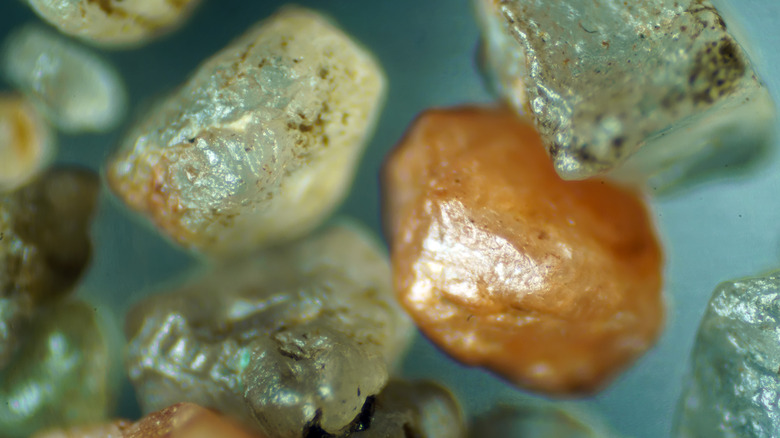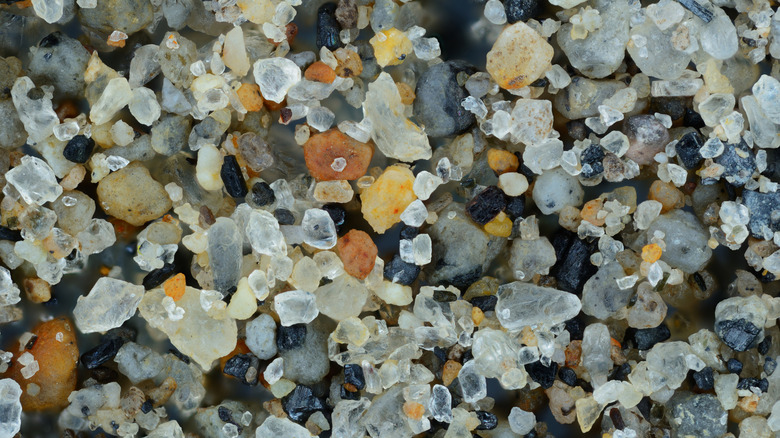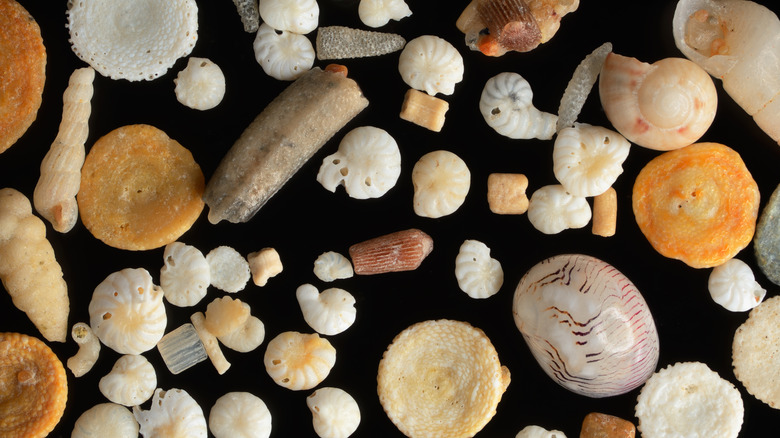Not All Sand Looks The Same Under A Microscope
Microscopes have all sorts of incredibly important uses in science, such as examining forensic evidence and studying the very structure of the world around us. But they're also pretty good for making otherwise normal objects suddenly look incredibly cool.
Take chocolate. We all love the popular treat, but we're also surrounded by it every day, which means we're not exactly overcome with shock when we happen to see a Mars bar or a Kit Kat. Under a microscope, however, chocolate looks like moon rocks. Ants also look terrifyingly alien under a microscope and you'll never look at butterfly wings the same after seeing them in extreme closeup.
But it's not just food and insects that look different than you might expect at high magnification. Viewing other elements of our world under a microscope reveals facts that we might never have otherwise thought about. That's certainly the case with sand, which we tend to think of as one homogenous golden substance lining the nicer beaches of the world. But it turns out sand is actually surprisingly diverse when you take a closer look.
Sand differs depending on the location
When we think of sand we don't tend to think of how it might differ from place to place, but there are in fact multiple different types of sand, which, when you think about it, makes a lot of sense. Sand is mainly formed from the breakdown of rocks over thousands or even millions of years. The process involves the rocks traveling down rivers and streams, eroding the whole way before they reach the ocean, where they continue to break down due to the forces of waves and the tide.
In that sense, it's sort of silly to expect all sand to look the same. After all, not every beach is going to have the same mixture of rocks, and looking at sand under a microscope very quickly reveals as much. As a video from YouTuber Tardibabe shows, sand can actually be made up of a surprisingly diverse range of grains.
Further adding to the diversity of sand, as revealed in extreme closeup, is the fact that the substance isn't just made from pieces of eroded rocks. Beach sand contains fragments of elements from the sea, including shells and pieces from underwater organisms such as coral reefs in areas where these natural formations are prevalent. As such, beaches will contain different types of grains that originate from the sea depending on the area, which then mix with the grains from rocks to create unique sand types around the world.
Sand is more diverse than you realize
If sand grains come from such a diverse array of rocks and minerals, then why is all sand brown or tan? Well, it's mostly due to the fact that quartz and feldspar are typically more hardy than other minerals, and as such, stick around for much longer. These two minerals become tinted with iron oxide over time, which turns the quartz light brown and the feldspar tan, and the combination makes the color we usually associate with sand.
But it's also important to note that not all sand is brown or tan. Though we think of the substance as being some variation of these colors, sand around the world actually varies quite considerably in terms of its hue. Hawaiian beaches can have white, black, green, or even red sand, while Bermuda is home to beaches with a pinkish sand. The pink beaches of Bermuda get their striking hue from microscopic red organisms known as foraminifera, a type of coral which comes from the warm waters around the island. Likewise, black sand is the result of eroded volcanic material and is therefore found in areas near volcanic activity.
Location clearly plays a big role in the type of sand you find on particular beaches, which explains why sand from different areas can look so strikingly diverse under a microscope.


